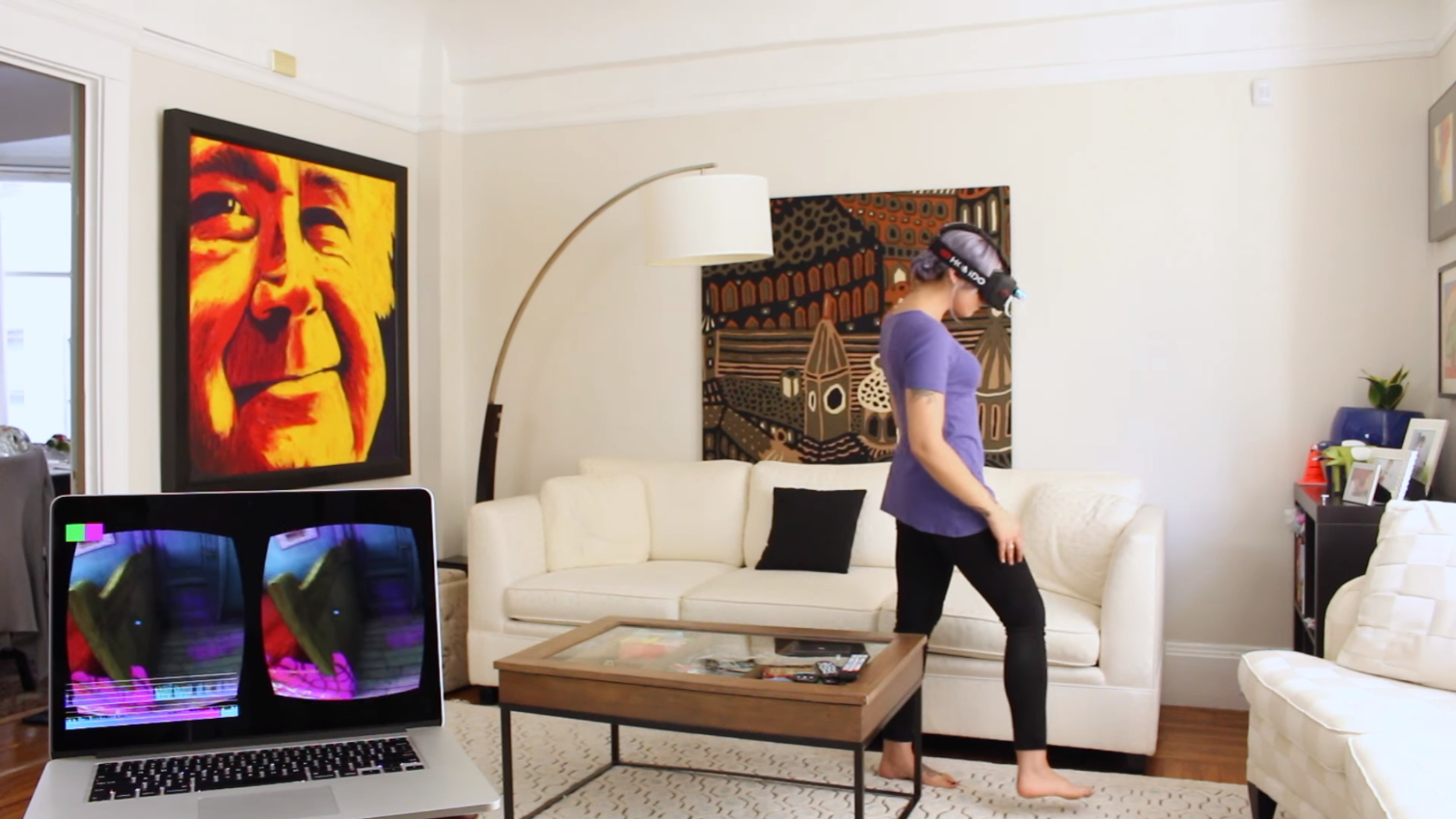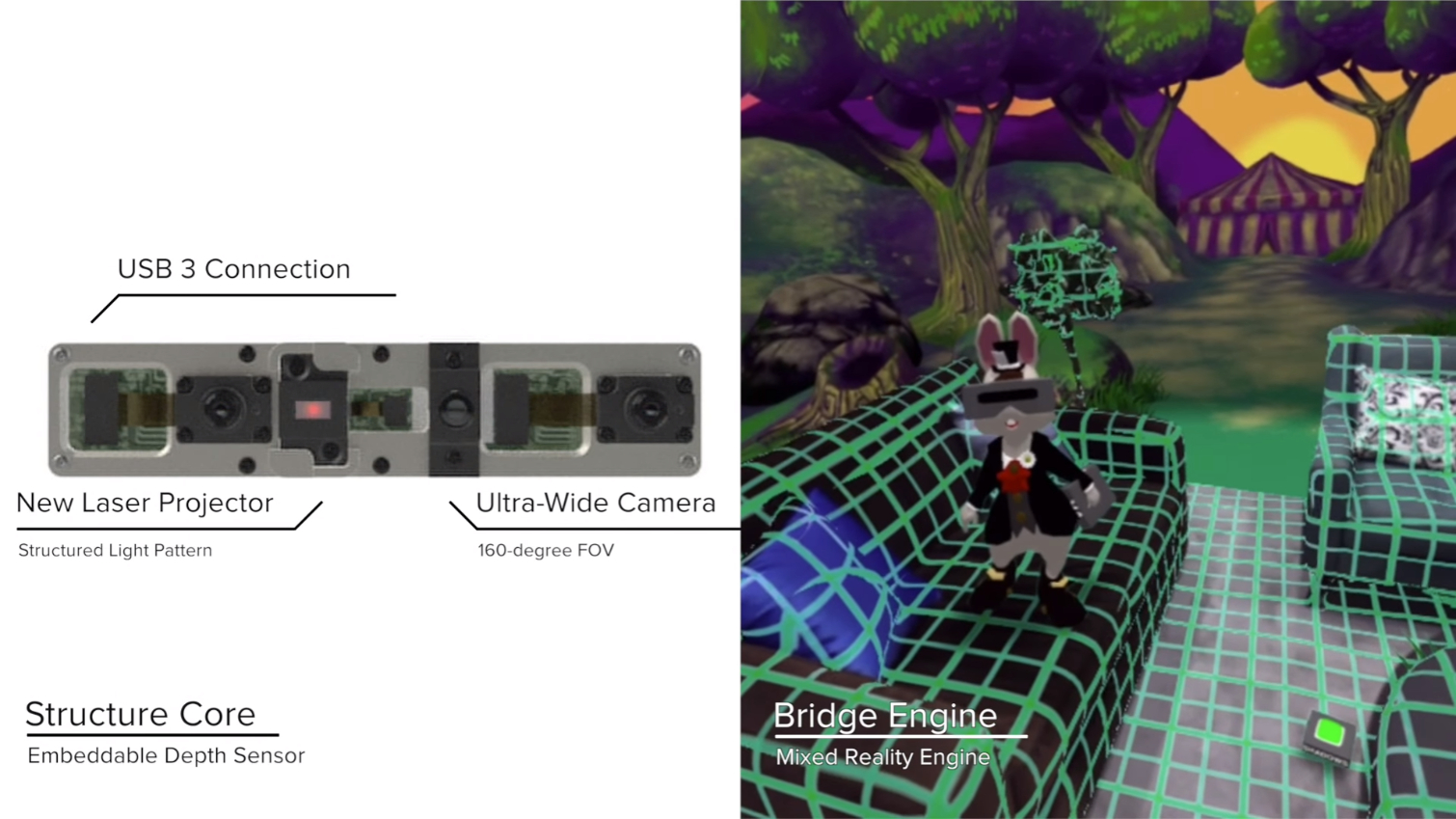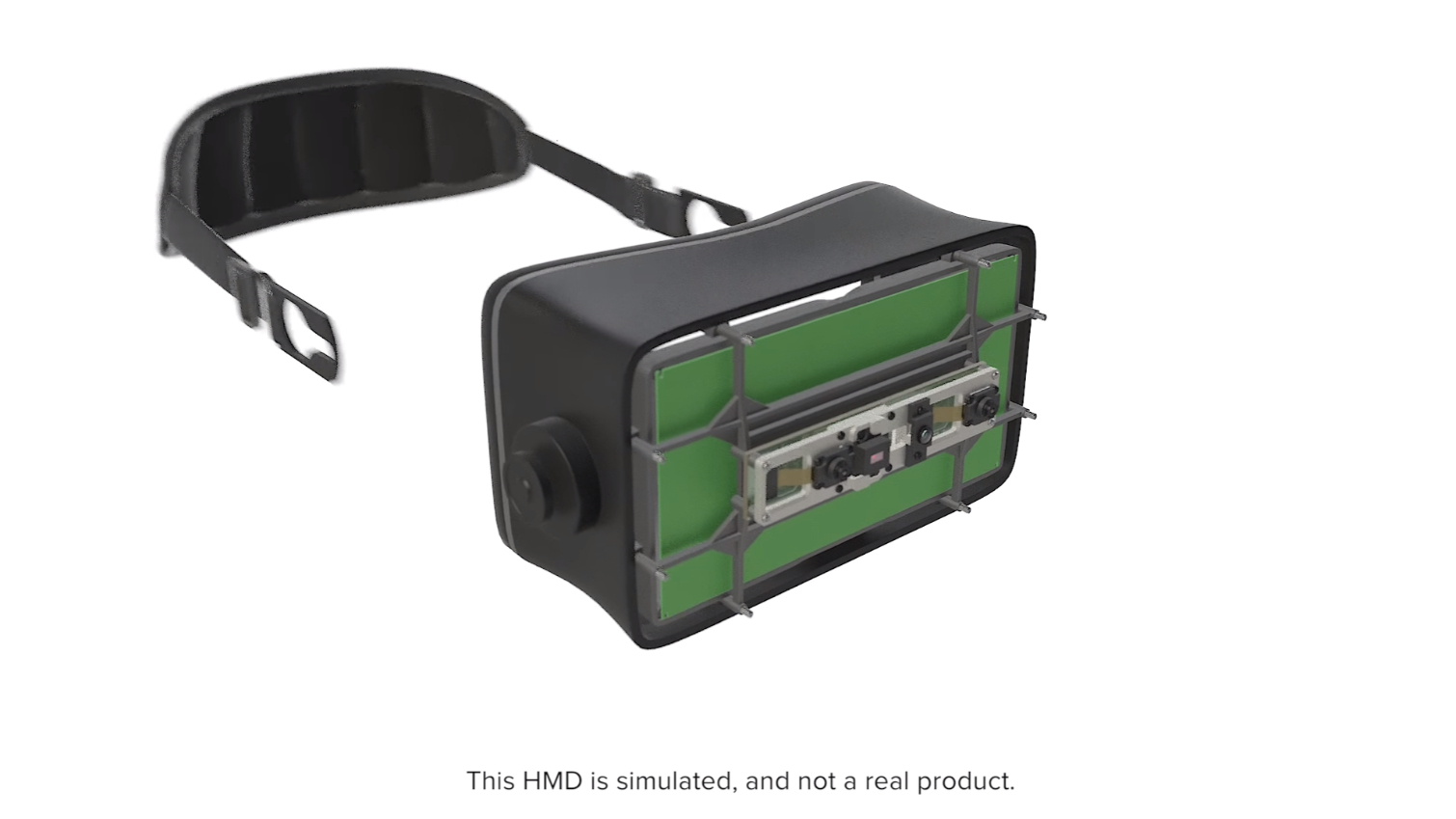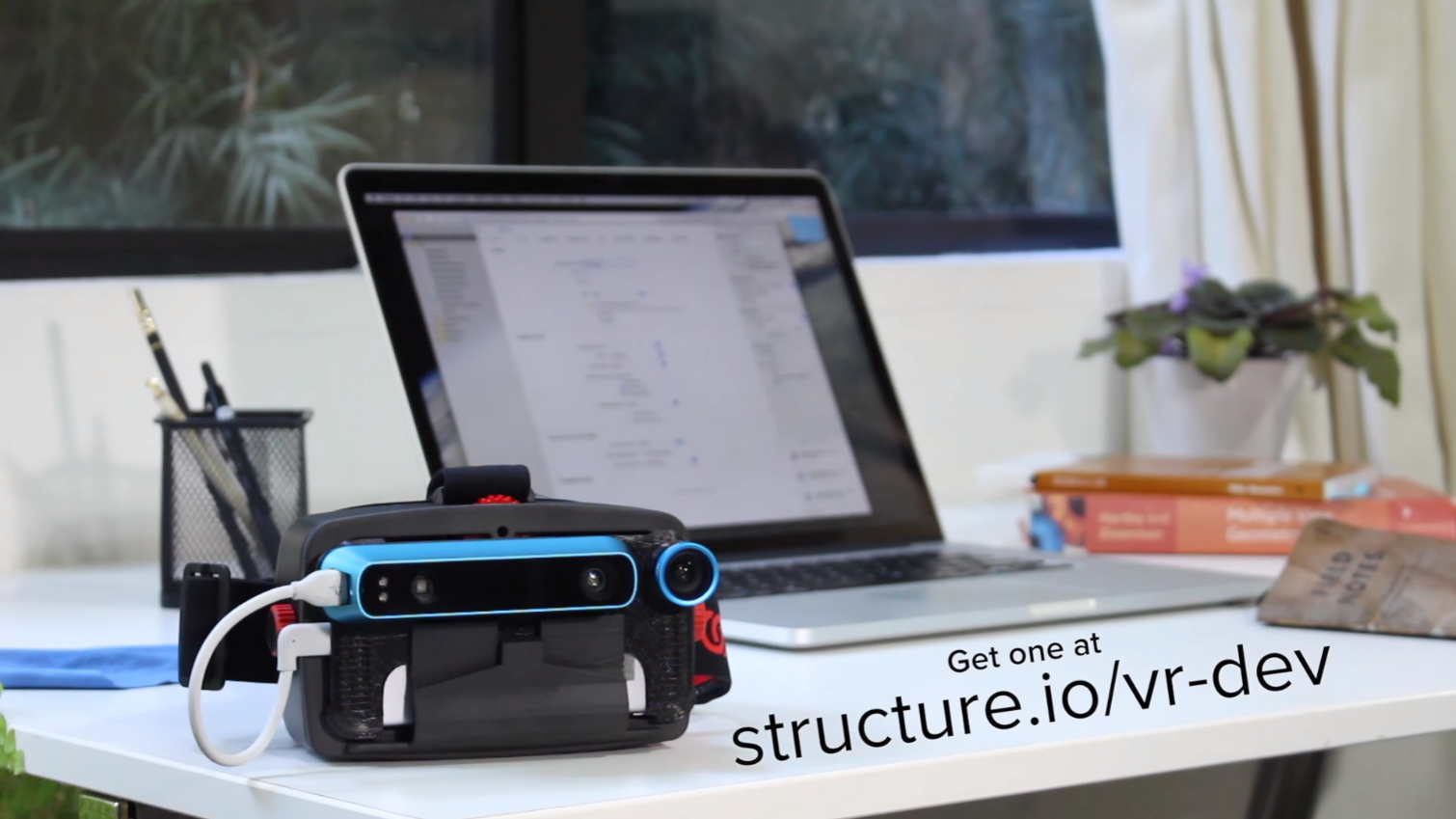Occipital’s Structure Sensor Reimagined For Mobile 6DoF Inside-Out Positional Tracking
When Occipital launched the Structure Sensor (through a Kickstarter campaign in 2013), its intended use was to scan the real world and bring it into the digital world. However, by combining the sensor’s 3D scanning capabilities with the real world camera from an iPhone, Occipital can repurpose Structure for AR and VR. Now, the company is now offering AR/VR developer kits that can integrate the Structure Sensor into smartphone HMDs.
Occipital’s roots lie in software development, and the company leveraged that strength to maximize the capability of its Structure Sensor. The company created a mixed reality software engine called Bridge Engine, which lets developers place lifelike animations into real-world locations in real time. Bridge Engine supports casting digital shadows on real-world objects, occlusion behind the real environment, and the ability for physics-based interactions between virtual and real objects.
The Structure Sensor scans the real environment to create a digital reconstruction of it that virtual objects and characters can interact with. The Bridge Engine can also transition from AR to VR environments. In virtual reality scenes, the software uses the room’s 3D data to create an advanced chaperone system that highlights furniture and other hazards.
Occipital’s Structure Sensor is meant to be a portable, tether-free device. It pairs with an iOS device such an iPad or an iPhone and lets you walk around freely to scan your space. The AR/VR dev kits are also tether-free and offer full 6-degrees of freedom (6DoF) tracking, which opens up the possibilities for tracked spaces of potentially unlimited size.
Occipital developed a new generation Structure Core sensor that hardware designers can order now for integration into future virtual and augmented reality devices, but the current hardware already offers a viable solution for developers to start building projects that leverage the technology. The Structure Sensor is capable of sub-10ms positional tracking with minimal jitter (0.4 mm RMSE), and it is optimized to do so on less than 50% of the performance of one 1.5GHz ARMv8 core.
The developer kits are available now in limited quantities for qualified developers. The kits include a Structure Sensor and a mobile VR HMD with a custom 3D printed faceplate that's designed to hold the sensor and an iPhone 6 or 6S. The dev kits are available only for iPhone devices because the Structure Senor is an iOS-only peripheral. Occipital does not include the phone with the dev kit. Visit the Structure.io website to apply for a dev kit.
Get Tom's Hardware's best news and in-depth reviews, straight to your inbox.
Kevin Carbotte is a contributing writer for Tom's Hardware who primarily covers VR and AR hardware. He has been writing for us for more than four years.
-
bit_user Wow. Take that, hololens!Reply
This is a lot like what some people are doing with Google's Project Tango. They're using a Cardboard-style HMD with the tablet, for a closed AR experience. Also like Intel's Project Alloy, in fact.
-
Jeff Fx I would have gotten a Structure Sensor a while ago if they'd developed Android software. This is something that can be very useful for people who are too technically inclined to own an iDevice, but don't have the time to spend writing their own software to support it. I understand it's also useful for creative people who do use Apple products, but they could double their sales if they created an Android version of the software.Reply -
bit_user Reply
That software already exists. It's called Project Tango. The only problem is that the hardware support is currently limited to a ~2 year old tablet or an unreleased Lenovo phone.18660584 said:I would have gotten a Structure Sensor a while ago if they'd developed Android software.
https://get.google.com/tango/
I'm expecting them to announce some sort of AR HMD or support for Intel's Project Alloy, pretty soon. Otherwise, they risk being left in the dust.



